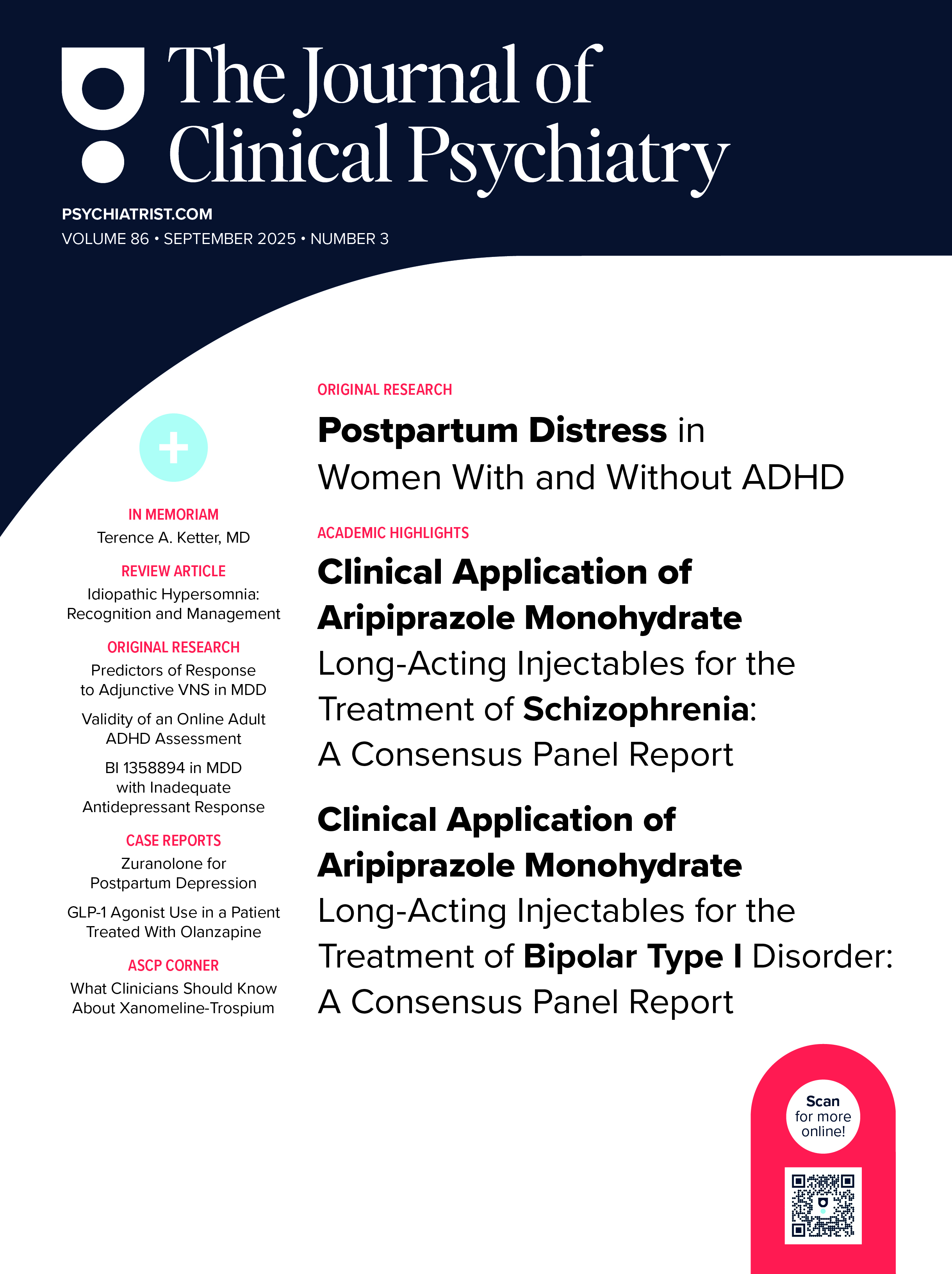Because this piece does not have an abstract, we have provided for your benefit the first 3 sentences of the full text.
In last month’s ASCP Corner,1 the issue of real-life dosing of second-generation antipsychotics (APs) in patients showing an inadequate response to recommended doses was discussed. The article focused on reasons why the dose ranges derived from premarketing registration trials may not be generalizable to certain clinical populations that are systematically excluded from these important efficacy studies.’ ‹
This month’s column will examine different switch strategies of second-generation APs in patients showing an inadequate response to an appropriate trial with an AP, again addressing the question of generalizability of the results from randomized controlled trials comparing different switch strategies.’ ‹
Please sign in or purchase this PDF for $40.00.



